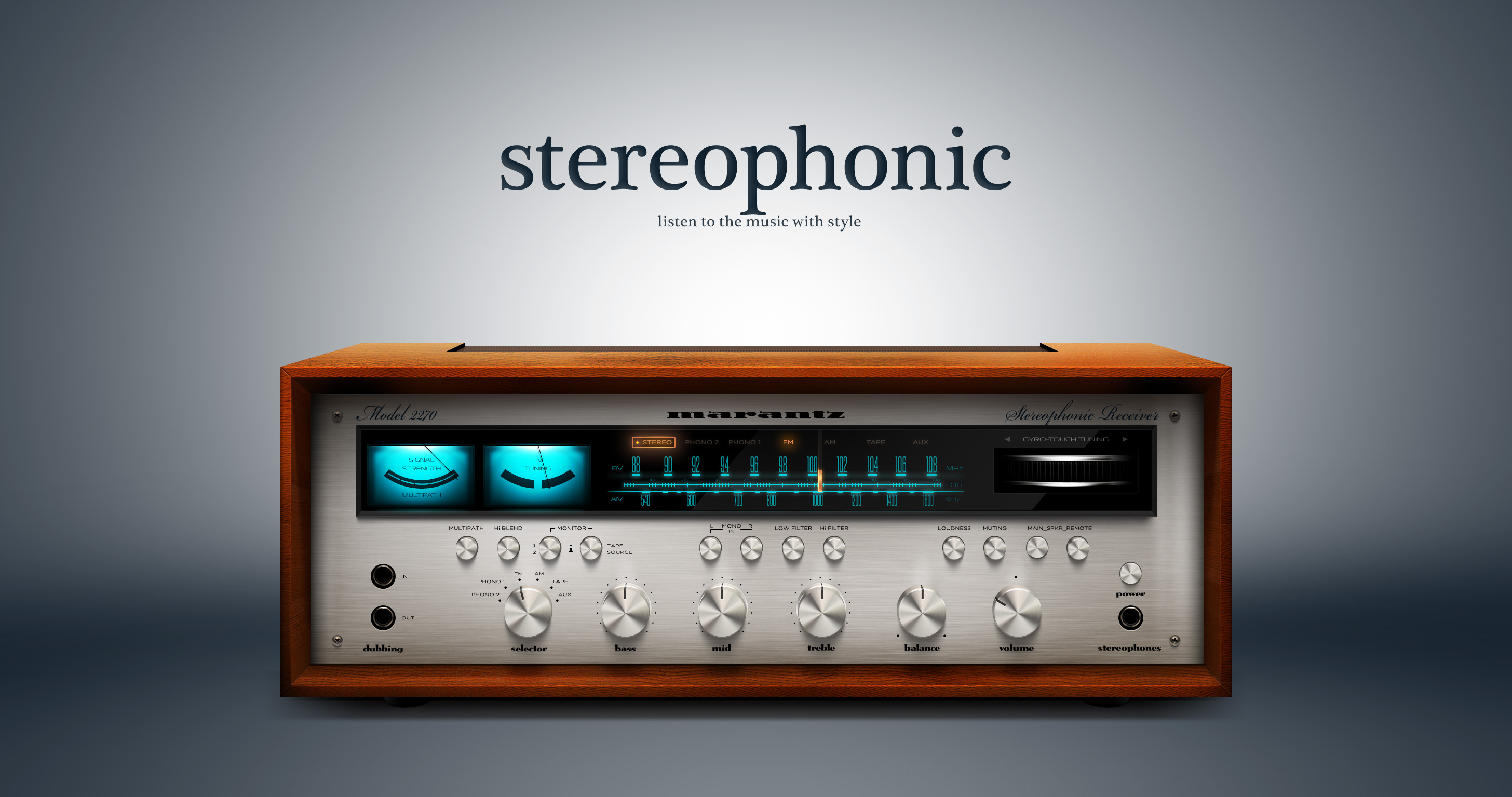Stereophonic Sound
/GettyImages-685053372-5b08cd883418c60038f2b8a7.jpg)
Stereophonic sound, also known as stereo, is a method of sound reproduction that creates an illusion of sound coming from multiple directions. It uses two or more audio channels to create a sense of space and depth.
The two main components of stereophonic sound are stereo channels and binaural recording.
Stereo Channels, Stereophonic
Stereo channels are two or more audio channels that are played back through separate speakers. The most common stereo configuration is a two-channel system, with one speaker placed on the left and one on the right.
When a stereo recording is played back through a two-channel system, the sound from the left channel is played through the left speaker and the sound from the right channel is played through the right speaker. This creates the illusion that the sound is coming from the left and right directions.
Binaural Recording
Binaural recording is a technique that uses two microphones placed in the ears of a dummy head to create a recording that simulates the way sound is heard by a human listener.
When a binaural recording is played back through headphones, the listener hears the sound as if they were actually in the space where the recording was made. This can create a very immersive and realistic listening experience.
Advantages and Limitations of Stereophonic Sound
Stereophonic sound offers a number of advantages over mono sound, including:
- Increased realism and immersion
- Improved sound localization
- Enhanced spatial awareness
- Greater emotional impact
However, stereophonic sound also has some limitations, including:
- Increased cost and complexity
- Potential for phase cancellation
- Reduced compatibility with mono systems
Applications of Stereophonic Sound
Stereophonic sound is used in a wide variety of audio applications, including:
- Music
- Movies
- Television
- Video games
- Virtual reality
Stereophonic Sound in Music Production

Stereophonic sound, a cornerstone of modern music production, has revolutionized the way music is created, mixed, and experienced. In this section, we will delve into the techniques, impact, and creative possibilities of stereophonic sound in music production, exploring its transformative role in enhancing musical expression.
Recording in Stereophonic Format
Recording in stereophonic format involves capturing sound using two or more microphones placed at strategic positions to create a realistic sense of space and depth. This technique allows engineers to capture the natural spatial characteristics of a performance, preserving the relative positions of instruments and performers.
- Microphone Placement: The placement of microphones is crucial in achieving a balanced and immersive stereo recording. Common techniques include the XY, ORTF, and Mid-Side configurations, each offering unique spatial characteristics.
- Ambiance Capture: Using additional microphones to capture the natural ambiance of the recording environment can add depth and realism to the mix.
Mixing in Stereophonic Format
Mixing in stereophonic format involves manipulating the panning and level of individual tracks to create a cohesive and engaging stereo image. Stereo panning allows engineers to position instruments and sounds across the stereo field, creating a sense of width and depth.
- Panning Techniques: Stereo panning techniques range from simple hard panning (placing a sound entirely to the left or right) to more subtle adjustments that create a sense of space and movement.
- Spatial Effects: Reverb, delay, and other spatial effects can be used to enhance the perceived depth and ambience of a stereo mix.
Mastering in Stereophonic Format
Mastering in stereophonic format involves the final processing and optimization of a stereo mix. Engineers use equalization, compression, and limiting to ensure the mix is balanced, clear, and suitable for playback on various systems.
- Equalization: Mastering engineers use equalization to adjust the tonal balance of the mix, ensuring that all frequency ranges are represented accurately.
- Compression: Compression helps to control the dynamic range of the mix, preventing extreme volume fluctuations and enhancing the overall punch and loudness.
- Limiting: Limiting is used to prevent the mix from exceeding a certain volume threshold, ensuring that it can be played back at high levels without distortion.
Creative Possibilities
Stereophonic sound offers a vast array of creative possibilities in music production. By manipulating stereo panning and spatial effects, producers and engineers can create immersive and dynamic soundscapes that enhance musical expression and captivate listeners.
- Movement and Depth: Stereo panning can be used to create a sense of movement and depth within a mix, allowing instruments to interact with each other in a realistic and engaging way.
- Spatial Effects: Spatial effects can be used to simulate natural environments, such as concert halls or outdoor spaces, adding a sense of authenticity and immersion to the listening experience.
- Immersive Experiences: Stereophonic sound can be used to create immersive listening experiences that transport listeners to different worlds, enhancing the emotional impact and memorability of music.
Stereophonic Sound in Audio Engineering

Stereophonic sound is used in audio engineering to create a sense of space and depth in a recording or live performance. It is achieved by using two or more microphones to capture the sound from different perspectives and then reproducing the sound through two or more speakers.
Principles of Stereophonic Microphone Placement and Recording Techniques
The placement of the microphones is critical to the success of a stereophonic recording. The most common microphone placement techniques are the XY, ORTF, and Blumlein techniques.
- The XY technique uses two microphones placed close together, pointing in the same direction.
- The ORTF technique uses two microphones placed about 17 cm apart, pointing at an angle of 110 degrees.
- The Blumlein technique uses two microphones placed about 30 cm apart, pointing in opposite directions.
Stereophonic Sound in Sound Reinforcement Systems and Live Audio Applications
Stereophonic sound is often used in sound reinforcement systems and live audio applications to create a more immersive experience for the audience. It can be used to create a sense of space and depth, and to make the sound more realistic.
Challenges and Considerations for Designing and Implementing Stereophonic Audio Systems
There are a number of challenges and considerations that must be taken into account when designing and implementing stereophonic audio systems. These include:
- The choice of microphones and their placement
- The acoustics of the recording or performance space
- The capabilities of the sound reinforcement system
- The listening environment